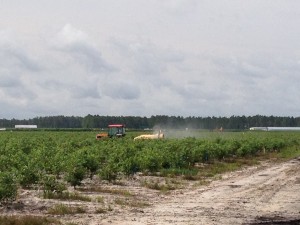Answering Questions About What Time to Treat Spotted Wing Drosophila
go.ncsu.edu/readext?299238
en Español / em Português
El inglés es el idioma de control de esta página. En la medida en que haya algún conflicto entre la traducción al inglés y la traducción, el inglés prevalece.
Al hacer clic en el enlace de traducción se activa un servicio de traducción gratuito para convertir la página al español. Al igual que con cualquier traducción por Internet, la conversión no es sensible al contexto y puede que no traduzca el texto en su significado original. NC State Extension no garantiza la exactitud del texto traducido. Por favor, tenga en cuenta que algunas aplicaciones y/o servicios pueden no funcionar como se espera cuando se traducen.
Português
Inglês é o idioma de controle desta página. Na medida que haja algum conflito entre o texto original em Inglês e a tradução, o Inglês prevalece.
Ao clicar no link de tradução, um serviço gratuito de tradução será ativado para converter a página para o Português. Como em qualquer tradução pela internet, a conversão não é sensivel ao contexto e pode não ocorrer a tradução para o significado orginal. O serviço de Extensão da Carolina do Norte (NC State Extension) não garante a exatidão do texto traduzido. Por favor, observe que algumas funções ou serviços podem não funcionar como esperado após a tradução.
English
English is the controlling language of this page. To the extent there is any conflict between the English text and the translation, English controls.
Clicking on the translation link activates a free translation service to convert the page to Spanish. As with any Internet translation, the conversion is not context-sensitive and may not translate the text to its original meaning. NC State Extension does not guarantee the accuracy of the translated text. Please note that some applications and/or services may not function as expected when translated.
Collapse ▲Blueberries and blackberries are getting close to ripening in North Carolina, and I have fielded a few questions from grower about when during a day insecticide treatments for spotted wing drosophila (SWD) should be made. The most commonly asked question is typically “When are SWD in my field so I can treat them?”

Growers are starting to ask how best to time spotted wing drosophila management. Photo: Hannah Burrack
We do not have a good answer to the question of when SWD spend their most time in fields. This is an active area of research in our lab and many others. When we walk through a typical field, we very rarely see flies present on plants, although infestation may be present. This suggests that our insecticide treatments may not necessarily killing most of the flies they encounter “on the wing” or by directly contacting flies as they applied. I suspect that it may be more likely insecticides are killing flies while they interact with fruit to lay eggs.
My thought process when considering treatment timing during the day for the SWD is:
- We cannot say for sure at this time where SWD spend most of their time and when during the day they are most likely be present in fields.
- We do not know how many flies it takes to cause a significant infestation, so we don’t know how many we need to kill.
- We do know that when they come into our fields, the females are attracted to and interested in laying eggs in fruit.
- Therefore, the best known opportunity to impact flies is when they land on fruit, whatever time that might be.
This means that I encourage growers to think about protecting fruit, rather than thinking about killing flies at the time of treatment. This thinking suggestion that growers should treat when it is safest for bees and other beneficial insects but focus on achieving and maintaining good coverage of fruit. Evening or night treatments generally have the least potential impact on pollinators and other beneficial insects because they are not active as these times and there is as long as period as possible materials to dry before bees become active the next day. The goal of SWD treatments should be to make sure that the fruit has insecticide sufficient to kill flies when they land on it.
For large plants, treating every row if is likely necessary to achieve good coverage. When in doubt, growers should check coverage with water sensitive spray cards. They may be surprised that alternate row spray, even in dormanat plants, may not result in acceptable coverage, as researchers in GA discovered last year for in a research planting of rabbiteye blueberries. A similar, more detailed study from Michigan conducted in the late 1990s addressed questions of coverage with ground sprayers in highbush blueberries and found that coverage could be also be poor after plant had full canopies mid season.
As we learn more about SWD biology, our management recommendations are likely to change, but for now, I think evening or night treatments are an appropriate choice.
More information
Alternate-Row-Middle (ARM) Spraying for Rabbiteye Blueberry Green-tip and Bloom Sprays – UGA Blueberry Blog
Canopy development and spray deposition in highbush blueberry – HortTechnology


